When you start comparing smart home hubs, you quickly realize one central truth: the best choice isn’t about the flashiest features. It’s about how well it can get all your different devices talking to each other. A good hub is the command center that stops your smart home from being just a bunch of cool gadgets that don’t work together. It’s what lets your smart lock from one company tell the lights from another company to turn on. That’s the core problem a hub solves—interoperability.
What a Smart Home Hub Actually Does

Think of a smart home hub as the brain of your entire connected home. Without it, your smart thermostat, lights, and speakers are all stuck on their own little islands, each needing its own app and unable to coordinate. The hub is the universal translator that gets them all on the same page.
This unification is what makes truly powerful automations possible. It’s how you can say “goodnight” and have your thermostat automatically adjust, your lights dim, and your smart speaker start playing some relaxing music—all at once.
It’s no surprise this tech is becoming so common. The global market for smart home hubs is expected to hit around $125 million in 2025, a clear sign that people are hungry for this kind of convenience. This growth really shows how vital these devices are becoming in our homes.
Understanding the Languages Your Hub Speaks
To pick the right hub, you need to know what “languages” it speaks. Most don’t just use your home’s Wi-Fi, which can get crowded and slow things down. Instead, they use dedicated, low-power networks built specifically for smart devices. You can get a much deeper look by checking out our guide on the future of smart home technology.
Here are the main communication protocols you’ll run into:
- Zigbee: This is a popular, low-power mesh network known for being fast and reliable. You’ll find it in devices from brands like Philips Hue and in many of Amazon’s Echo devices.
- Z-Wave: Because it runs on a completely different frequency from Wi-Fi, Z-Wave avoids interference. It’s a favorite for security gear like smart locks and sensors because it uses very strong encryption.
- Thread: A newer, IP-based mesh network that creates a self-healing and incredibly stable connection between devices. It’s a foundational part of the Matter standard.
- Matter: This isn’t a protocol on its own, but a universal standard built to make devices from different manufacturers play nice together. It runs on top of Thread and Wi-Fi.
The most powerful hubs are multi-lingual, supporting several of these protocols at once. This versatility is what future-proofs your smart home. It gives you the freedom to pick the best devices for the job, without worrying about what brand is on the box.
A Look at the Top Smart Home Ecosystems
Picking a smart home hub is a bit like choosing a new operating system for your house. The decision you make upfront sets the tone for everything that follows, from the gadgets you can buy to the way you control them. Each of the major players has a completely different idea of what a smart home should be, so understanding their core philosophies is the first step.
The smart home world is really ruled by a handful of big names. Each has its own legion of compatible devices and a dedicated user base. These aren’t just apps on your phone; they’re entire frameworks for home automation, ranging from dead-simple setups to deeply technical, customizable systems.
The Big Names and Their Game Plan
The competition is fierce, and each platform has found its own sweet spot. By 2025, market share projections put Google Home in the lead at 30%, with Amazon Alexa right behind it at 25%. Apple HomeKit is expected to hold 20%, Samsung SmartThings 15%, and the DIY favorite, Home Assistant, about 10%. These numbers tell a story about what each system does best, and you can dig deeper into smart home statistics to see the trends.
Here’s a quick rundown of what makes each one tick:
- Amazon Alexa: If you want the widest possible device support, this is it. Alexa is everywhere. Its strength lies in its massive compatibility list and a huge library of third-party “Skills,” making it an easy and accessible entry point for anyone new to smart homes.
- Google Home (Assistant): This is the brainy one. Leaning on Google’s powerful AI, the Assistant excels at understanding natural conversation and context. If you’re already living in the Google ecosystem (Gmail, Calendar, Android), the integration feels seamless and almost second nature.
Niche Players and DIY Alternatives
Once you get past the giants, you find platforms that offer something more specific. Whether you’re a privacy nut or a dedicated tinkerer, these hubs are built for users with a clear set of priorities.
Think of this as a long-term relationship. The ecosystem you choose determines what you can buy and how much you can tinker for years to come. Match it to your tech skills, privacy standards, and the devices you already own.
Apple HomeKit, for instance, is all about security and privacy, all neatly wrapped in Apple’s signature walled garden. For iPhone and Mac users, it delivers a polished, secure, and tightly integrated experience.
Then you have Samsung SmartThings, which is the universal translator of the group. It’s known for its fantastic support for multiple connection standards like Zigbee and Z-Wave, making it a powerful and flexible central hub for connecting almost anything. And for the tech-savvy crowd, Home Assistant is the king—an open-source platform that gives you total local control, endless customization, and complete privacy.
A Head-to-Head Hub Feature Comparison
When you start comparing smart home hubs directly, it quickly becomes clear that the “best” choice really boils down to a few key features that will shape your day-to-day experience. Let’s get past the brand names and dig into the capabilities that actually matter, from the wireless protocols a hub can speak to how smart its automation engine really is. This is all about what makes each platform stand out in the real world.
The image below gives a great snapshot of how the big players stack up when you look at device support, ecosystem compatibility, and what users actually think of them.

You can see the classic trade-off right away: some platforms have massive compatibility, while others might have happier users. It really highlights where each one focuses its energy.
To get a clearer picture of these differences, this comparison table breaks down the core features of each major hub.
Smart Home Hub Feature Comparison
| Feature | Amazon Alexa | Google Home | Apple HomeKit | Samsung SmartThings | Home Assistant |
|---|---|---|---|---|---|
| Primary Interaction | Voice-first (Alexa) | Voice-first (Google Assistant) | App & Voice (Siri) | App-first, voice secondary | Web UI, App |
| Native Protocol Support | Wi-Fi, Zigbee, Thread/Matter | Wi-Fi, Thread/Matter | Wi-Fi, Thread/Matter | Wi-Fi, Zigbee, Z-Wave, Matter | Wi-Fi, Zigbee, Z-Wave, Thread/Matter (via dongles) |
| Automation Engine | Simple routines (“If this, then that”) | Simple routines (“If this, then that”) | Simple automations, some conditional logic | Moderate complexity (multi-conditional rules) | Highly complex and fully customizable scripting |
| Ecosystem Size | Massive (Skills library) | Very Large (Works with Google) | Curated but growing (MFi Program) | Large and diverse (Zigbee/Z-Wave support) | Virtually unlimited (Community-driven integrations) |
| Local Control | Limited, primarily cloud-based | Limited, primarily cloud-based | Strong, privacy-focused | Hybrid, moving toward more local control | Excellent, local-first priority |
| Best For | Voice-controlled convenience, beginners | Natural language voice control, Google users | Apple users, privacy enthusiasts | All-around flexibility, mixing device brands | Tinkerers, power users, ultimate customization |
This table shows the fundamental trade-offs you’ll be making. Now, let’s explore what these features actually mean for your smart home.
Protocol Support: The Foundation Of Compatibility
A hub’s real power is in the languages it can speak. Whether it has built-in support for protocols like Zigbee, Z-Wave, Thread, and Matter determines what you can connect directly, without needing a bunch of extra bridges and workarounds. Think of this as the bedrock of a truly versatile smart home.
Samsung SmartThings has been a powerhouse here for years. It comes with both Zigbee and Z-Wave radios built right in, which makes it a fantastic, flexible choice for connecting a huge range of sensors, locks, and switches. On the other hand, Amazon and Google traditionally focused on Wi-Fi but have started adding Zigbee and Thread into their newer devices to get on board with the Matter standard.
The gold standard is a hub that supports multiple protocols natively. Home Assistant, when you pair it with the right USB dongle, offers unmatched flexibility. It lets you connect almost any Zigbee or Z-Wave device you can find while also fully embracing Matter and prioritizing local control.
This kind of multi-protocol support is what future-proofs your system. It gives you the freedom to pick the best device for the job, no matter who makes it.
Automation Complexity and Intelligence
This is where a hub really starts to feel “smart.” Creating automations—often called “routines” or “scenes”—is the whole point. The real difference between platforms is the level of complexity and logic you can bake into these rules. Sure, a basic routine can turn on a light at sunset, but a powerful automation engine can do so much more.
Here’s a quick rundown of how they stack up:
- Simple Routines (Alexa & Google Home): These are fantastic for straightforward “if this, then that” commands. They’re super intuitive and perfect for beginners who just want to automate lights or music based on the time of day or a simple voice command.
- Conditional Logic (SmartThings): SmartThings kicks it up a notch. It lets you build more complex rules with multiple conditions, like “if the front door opens and it’s after sunset, but only if no one is home, then turn on the porch light.” This is where automations start to feel genuinely helpful.
- Limitless Customization (Home Assistant): For the ultimate power user, Home Assistant is in a league of its own. It offers a scripting engine where your imagination is the only real limit. You can create incredibly detailed automations based on device states, sensor data, time, weather, or even information it pulls from the internet.
Your choice here directly affects how intelligent your home will feel. It’s the difference between a home that just follows orders and one that seems to anticipate what you need.
Voice Assistants And App Usability
The main ways you’ll interact with your hub are through its app and a voice assistant. A clunky app or a dumb assistant can ruin the entire experience, so this is a critical piece of the puzzle.
Most people agree that Google Assistant is better at understanding natural language, making conversations and commands feel more fluid and less robotic. Amazon’s Alexa, however, has an absolutely massive library of third-party “Skills,” which lets it connect to an unbelievable number of services and devices. Meanwhile, Apple’s Siri, working through HomeKit, delivers a more secure and private experience, but the trade-off is a smaller ecosystem of compatible devices.
A hub’s integration with these assistants is important, but its own mobile app is where you’ll do the heavy lifting. This is an area where platforms like SmartThings often shine, providing a more centralized and user-friendly interface for managing a ton of different devices, which can be much easier than using the voice-first apps from Google and Amazon. This is especially true when you’re setting up detailed scenes for various smart home security systems.
Which Hub Fits Your Lifestyle?
When you’re comparing smart home hubs, the spec sheets only tell you half the story. The best hub for you is the one that actually fits into your daily life without a fuss. It’s less about raw power and more about what you want to accomplish and how much you enjoy tinkering with technology.

Let’s be honest, everyone’s needs are different. Are you just looking for something that works right out of the box, or are you the type who wants to build intricate, custom automations from the ground up? Your answer points to a very different kind of hub.
For the “Plug-and-Play” Beginner
If the thought of programming automations or messing with network settings makes you shudder, this is you. You want to open a box, follow a few simple steps on an app, and immediately start asking a voice assistant to turn on the lights or play your favorite Spotify playlist.
Look no further than Amazon Alexa or Google Home. These platforms are designed for simplicity. Setup is a breeze, the list of compatible devices is massive, and creating simple routines—like a “Good Morning” command that turns on your lights and gives you the weather forecast—is incredibly easy. They deliver immediate results with minimal effort.
For the Dedicated Apple Loyalist
You’re all-in on Apple. You’ve got the iPhone, the Mac, maybe even an Apple Watch, and you appreciate the polished, secure experience the ecosystem provides. You want your smart home to feel like a natural part of the Apple world you already know and love.
For you, Apple HomeKit is really the only way to go. It’s built right into iOS and macOS, offering a secure and cohesive experience. While the number of compatible devices is a bit more limited, the products that do work with HomeKit are generally very reliable. Plus, Apple’s strong focus on privacy, with local processing and end-to-end encryption, is a huge draw.
The core decision often comes down to this: Are you prioritizing maximum device compatibility or a tightly integrated, secure ecosystem? Your answer immediately narrows the field, making the smart home hub comparison much simpler.
For the Automation Power User
You’re a tinkerer at heart. You see a smart home not just as a convenience, but as a creative project. You want to build complex automations with layers of conditions and triggers, and the idea of a system that runs completely on your own local network—no cloud required—is music to your ears.
Home Assistant was made for you. This open-source platform gives you ultimate control. You can connect devices from just about any manufacturer and design automations that are as complex as you can dream up, all while keeping your data completely private. There’s a definite learning curve, but the reward is a smart home that is truly your own.
For the Privacy-Focused Pragmatist
You want something more capable than a basic smart speaker but aren’t quite ready to dive into a full-blown DIY project like Home Assistant. Your big priorities are broad device support—including both Zigbee and Z-Wave—and making sure your home still works if the internet goes out. You want local control but still need a polished, easy-to-use app.
This is where Samsung SmartThings shines. It strikes a great balance, offering rock-solid support for multiple smart home protocols and an automation system that’s more powerful than what Alexa or Google offer. While it does use the cloud, its growing emphasis on running core automations locally makes it a dependable and versatile choice for anyone who wants flexibility without the steep technical climb.
Getting Started and Keeping It Running
When you pick a smart hub, you’re not just buying a piece of hardware; you’re investing in a long-term relationship with a platform. How easy it is to get started—and how much work it takes to keep things running smoothly—can make or break your entire smart home experience. Let’s look at the real-world demands of owning each of these systems.
The initial unboxing and setup is where you’ll see the biggest differences right away. Mainstream hubs from Amazon and Google are built for absolute beginners. You plug it in, follow a few simple prompts on an app, and you can have your first smart bulb working in less than ten minutes. It’s that easy.
This focus on simplicity is a huge reason the market is booming. The U.S. smart home hub market was valued at nearly $9.7 billion in 2024 and is expected to hit $25.8 billion by 2033. People clearly want smart home tech that just works without a lot of fuss. For a deeper dive into what’s driving this trend, you can find detailed market insights about smart home hub growth in the United States.
The First Few Steps: Onboarding
That first interaction with your new hub really sets the stage. Each platform has a totally different philosophy on getting you up and running.
- Guided and Simple (Alexa/Google): These systems practically hold your hand. The app scans your Wi-Fi network and often finds new devices automatically, making it dead simple to add a smart plug or light. They’ve polished the process to remove any technical headaches.
- Polished and Secure (HomeKit): Apple’s approach is famously slick. You just scan a QR code on the device with your iPhone, and HomeKit adds it securely to your home. It’s incredibly fast, reliable, and built with privacy in mind from the get-go.
- Flexible but Involved (SmartThings): Samsung SmartThings lands somewhere in the middle. The app is clean and easy to use, but adding Zigbee or Z-Wave devices is a bit more hands-on. It’s not difficult, but it’s a step up from the pure plug-and-play simplicity of Wi-Fi devices.
Long-Term Management and Updates
After the initial excitement, day-to-day maintenance becomes the reality. With hubs like Alexa and Google Home, firmware updates happen automatically in the background. You’ll probably never even know it’s happening, which is exactly what most people want. It’s a true “set it and forget it” system.
The real test comes when something goes wrong. If a smart plug on Alexa stops responding, your troubleshooting is usually limited to rebooting it. A more powerful hub gives you actual diagnostic tools to figure out what’s happening.
And then there’s Home Assistant, which is a world apart. It expects you to be an active participant. You’re the one in charge of running updates, making backups, and fixing an integration if it breaks after a software change. This gives you complete control but also requires a real-time commitment. For example, keeping complex automations tied to your security devices might need more hands-on work than a simple cloud platform. Our guide on wireless security camera installation touches on how different ecosystems manage these critical connections. This approach is a dream for a tech enthusiast but a potential nightmare for someone just looking for convenience.
Answering Your Top Smart Hub Questions

Even after comparing the top smart hubs, you probably still have a few practical questions. That’s completely normal. Choosing the right hub is about more than just features on a box; it’s about understanding how it will actually work in your home. Let’s clear up some of the most common questions to help you lock in your decision.
Think of this as the final piece of the puzzle. We’ll cover everything from the basic concepts to the finer points of different technologies, giving you the confidence to pick the perfect hub for your needs.
Do I Really Need a Hub If My Devices Already Have Their Own Apps?
Yes, if you want a smart home and not just a collection of remote-controlled gadgets, a hub is non-negotiable. Sure, individual apps let you turn things on and off, but they don’t talk to each other. They operate in their own little silos.
A hub is the central brain that gets everything working together. It’s what allows your Schlage smart lock to tell your Philips Hue lights to turn on the moment you unlock the front door. This kind of interplay between different brands is what a hub is all about. Without one, you’re just juggling a dozen different apps.
The real magic of a smart home isn’t just controlling one device with your phone; it’s about devices reacting to each other automatically. A hub is what makes this seamless interoperability possible.
What’s the Difference Between Zigbee, Z-Wave, and Wi-Fi?
These are simply the wireless languages, or protocols, that your smart devices use to communicate. Each one has its own strengths, which is why a good hub can speak more than one.
- Wi-Fi: You already know it. It’s fast and everywhere, but it can get crowded. Plus, it’s a power hog, which is a big problem for small, battery-powered sensors.
- Zigbee and Z-Wave: These were built from the ground up for smart home devices. They are low-power and create their own “mesh” network, which gets stronger and more reliable as you add more devices. This means your commands won’t get stuck competing with your Netflix stream for bandwidth.
- Thread: This is the new kid on the block, also a mesh network, and it’s a foundational part of the new Matter standard. It’s designed to be reliable and self-healing.
A versatile hub that supports multiple protocols gives you the freedom to buy the best device for the job, without worrying about what language it speaks.
Can My Smart Speaker Just Be My Hub?
For some people, yes. A newer Amazon Echo or Google Nest speaker often has a Zigbee or Thread radio built-in, allowing it to act as a basic hub. If you just want to set up a few simple routines, like turning on lights with your voice, this might be all you need to get started.
But if you’re serious about building a powerful, reliable smart home, a dedicated hub is a big step up. Hubs like Samsung SmartThings or platforms like Home Assistant offer so much more. You get support for more protocols (like Z-Wave), much more powerful automation engines, and local processing for speed and reliability. A speaker is a great entry point, but a dedicated hub is the long-term solution.
Why Is “Local Control” Such a Big Deal?
Local control is a game-changer for speed, reliability, and privacy. It means that the hub processes your commands and automations right there inside your house, not on some company’s server halfway across the world.
This is huge because your core automations—like a motion sensor turning on a light—will still work instantly even if your internet goes down. It also means your private data, like when you’re home or away, stays on your network. Hubs like Hubitat and Home Assistant are built around this principle, giving you a level of rock-solid reliability that cloud-based systems just can’t match.
At Automated Home Guide, we’re dedicated to helping you make sense of smart home technology. Explore our expert insights and comprehensive guides to build a safer, more efficient home. Visit us today at Automated Home Guide.
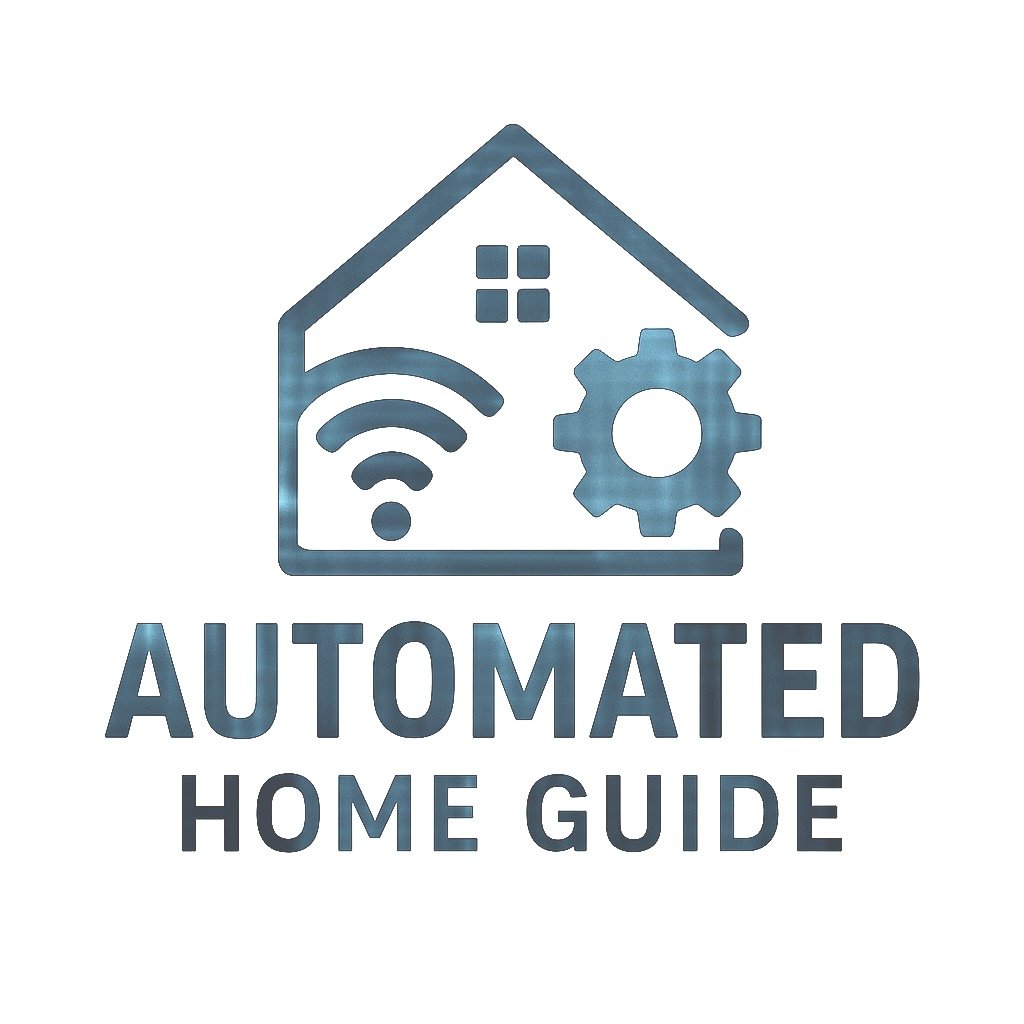
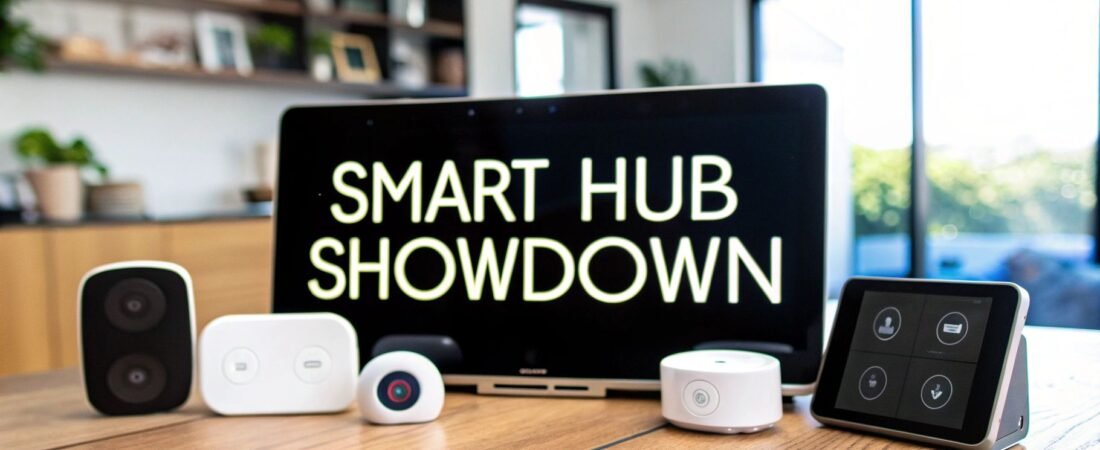
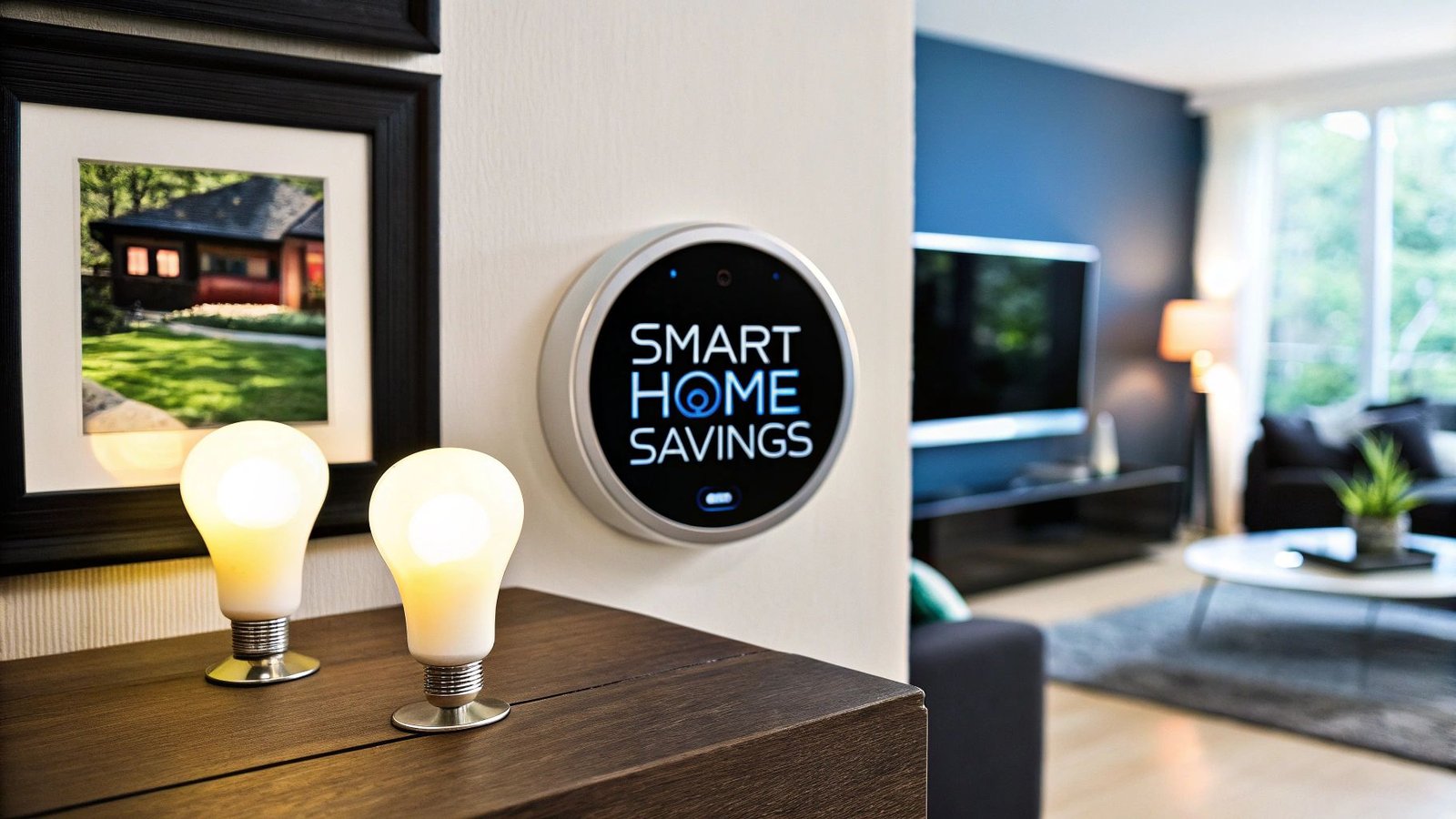
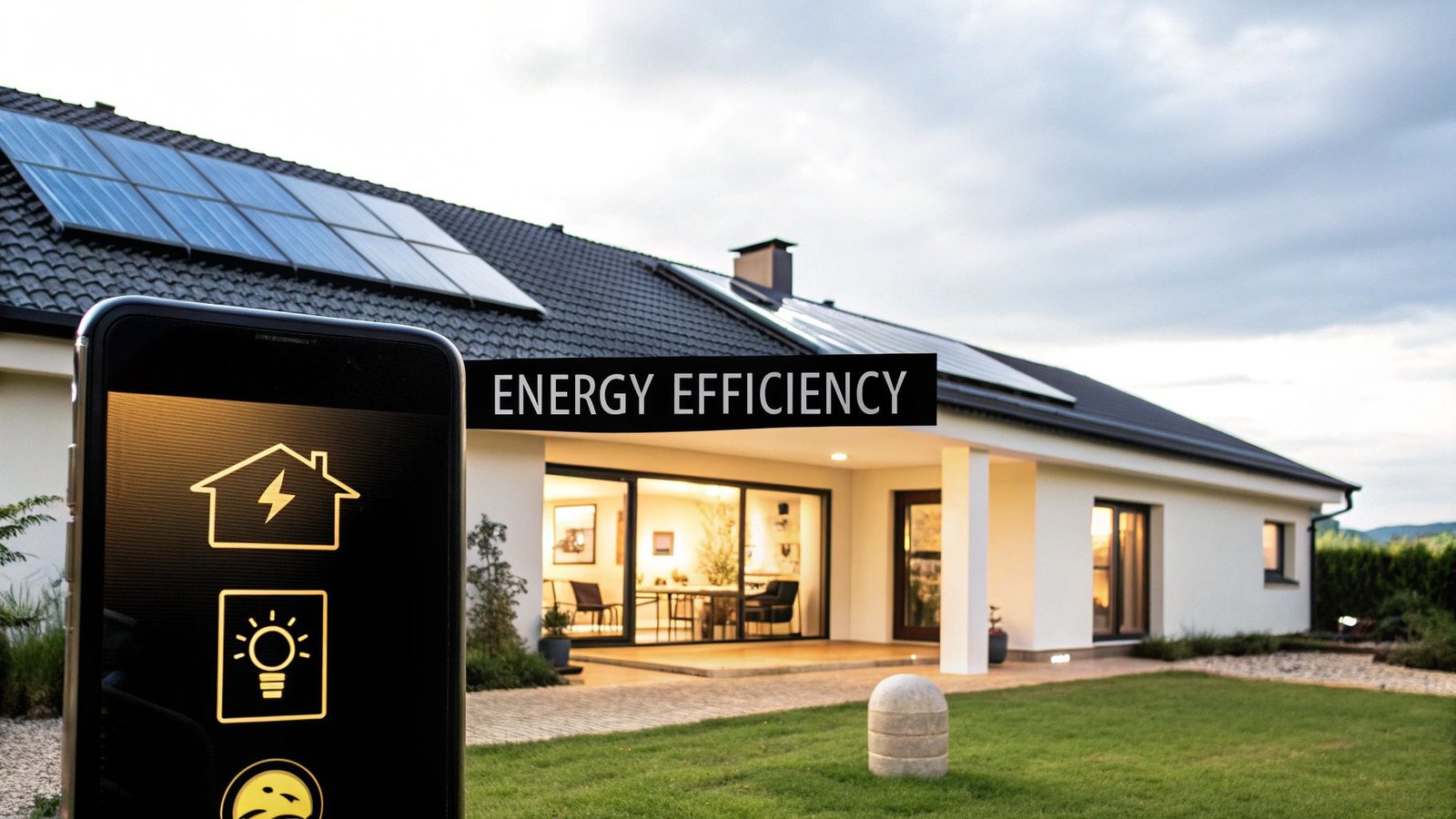
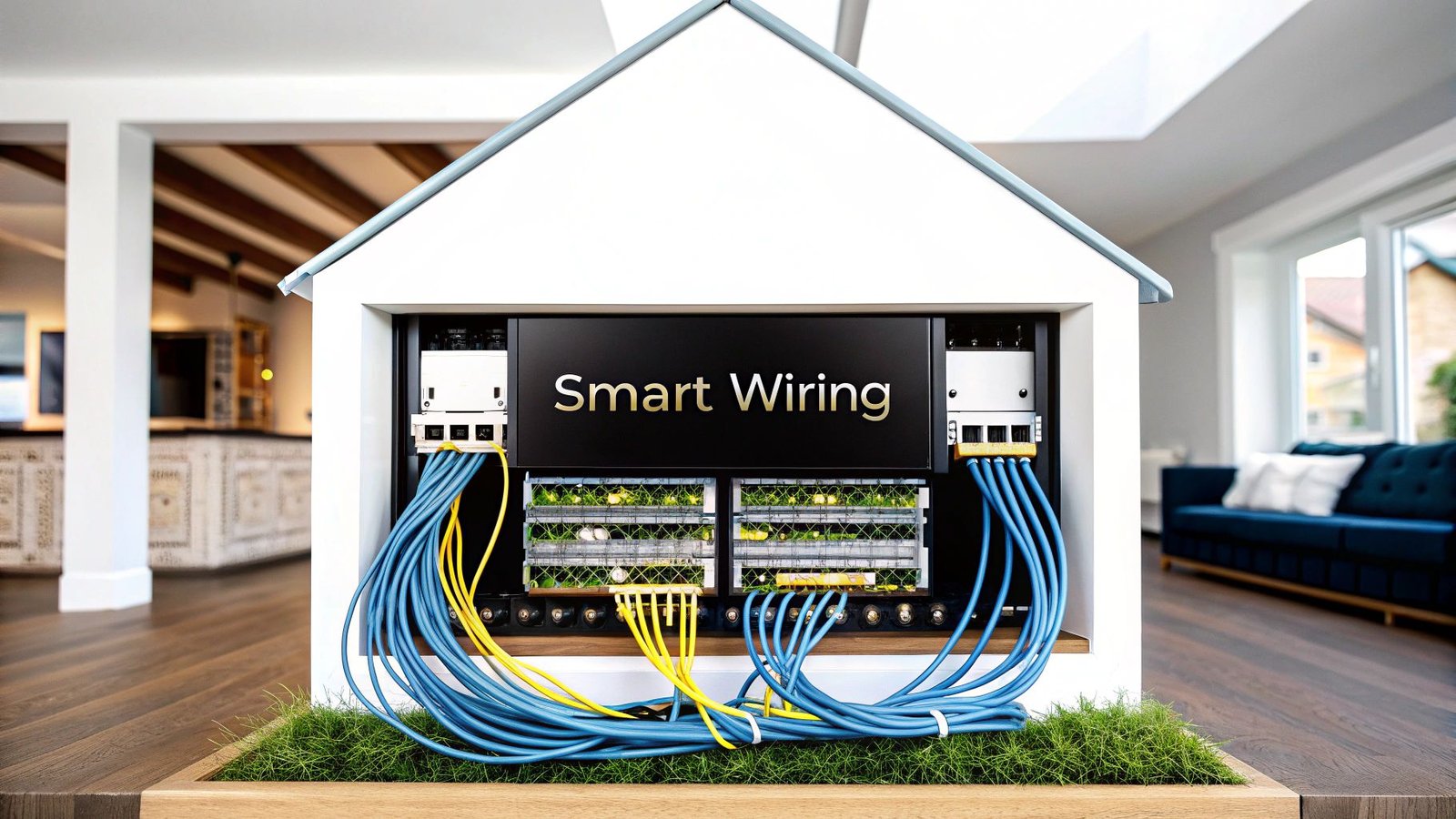
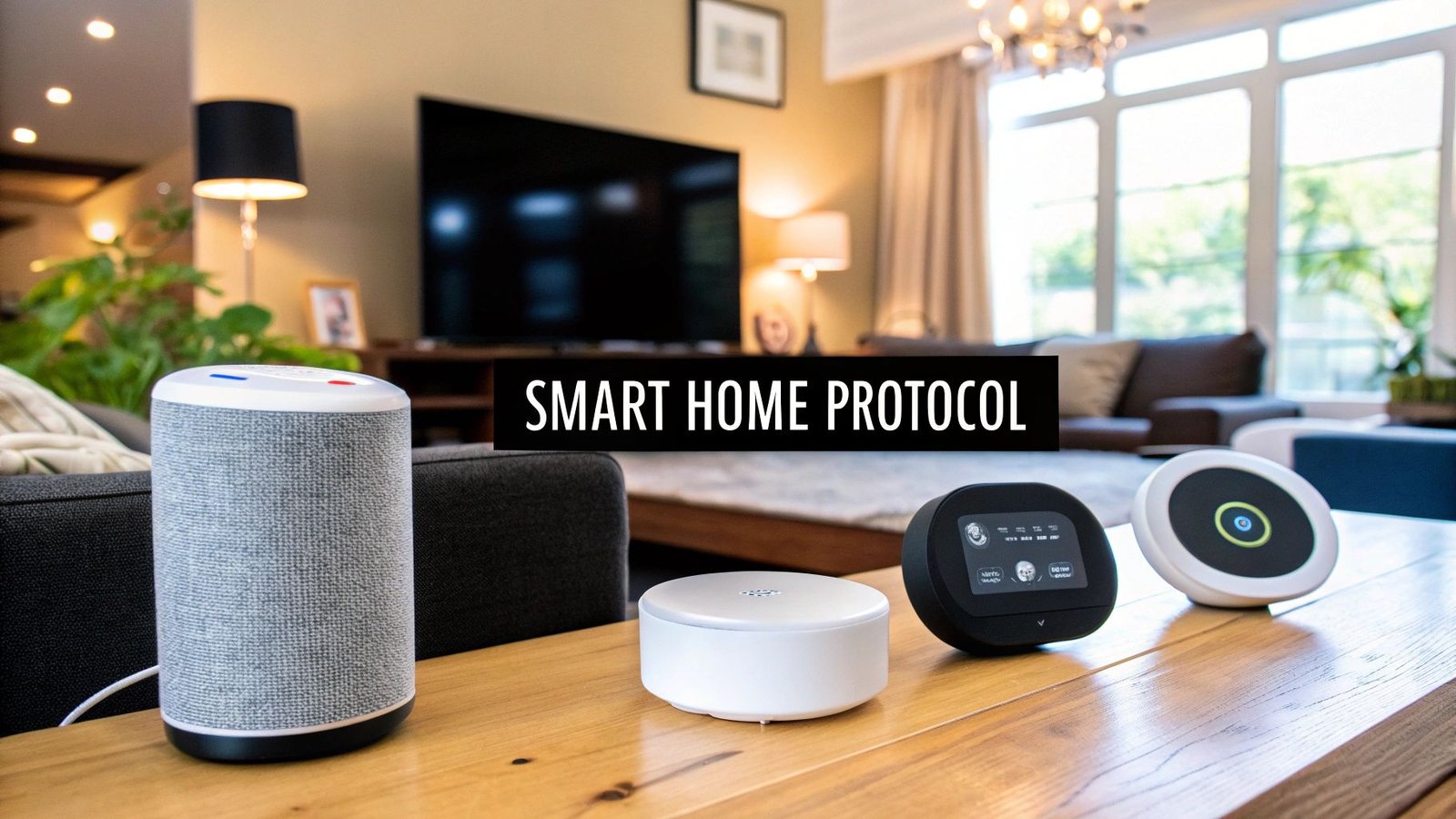
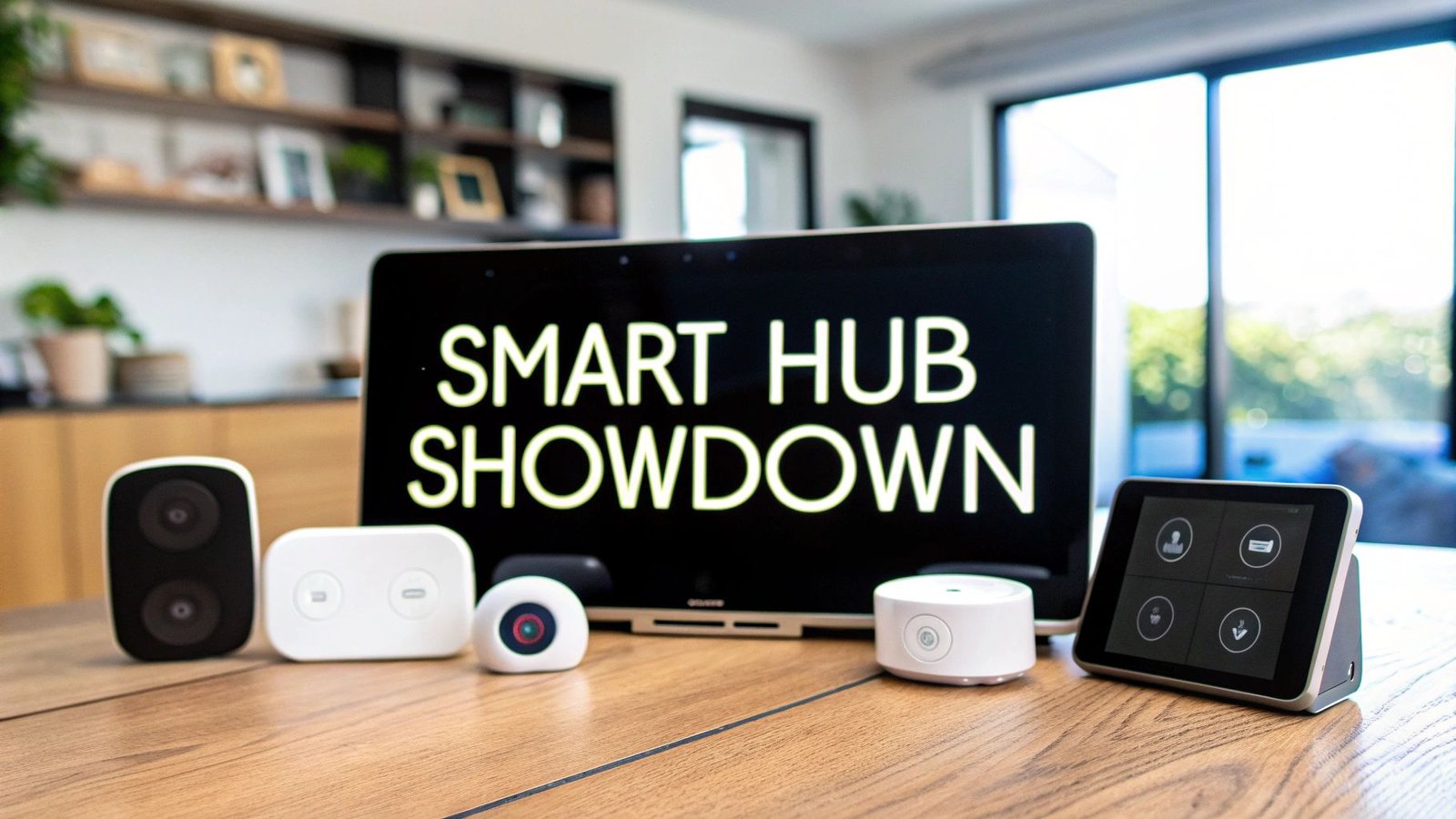
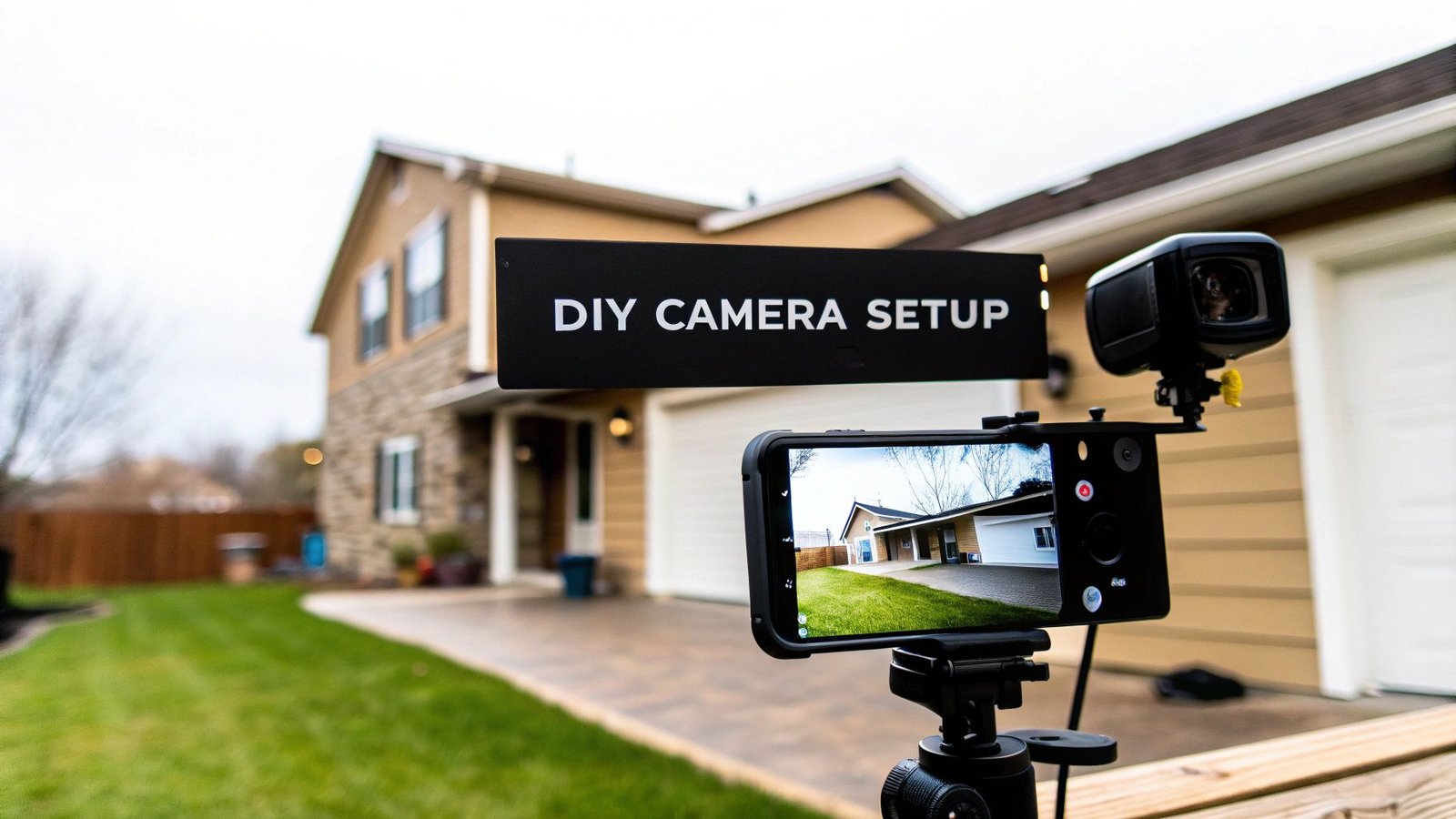
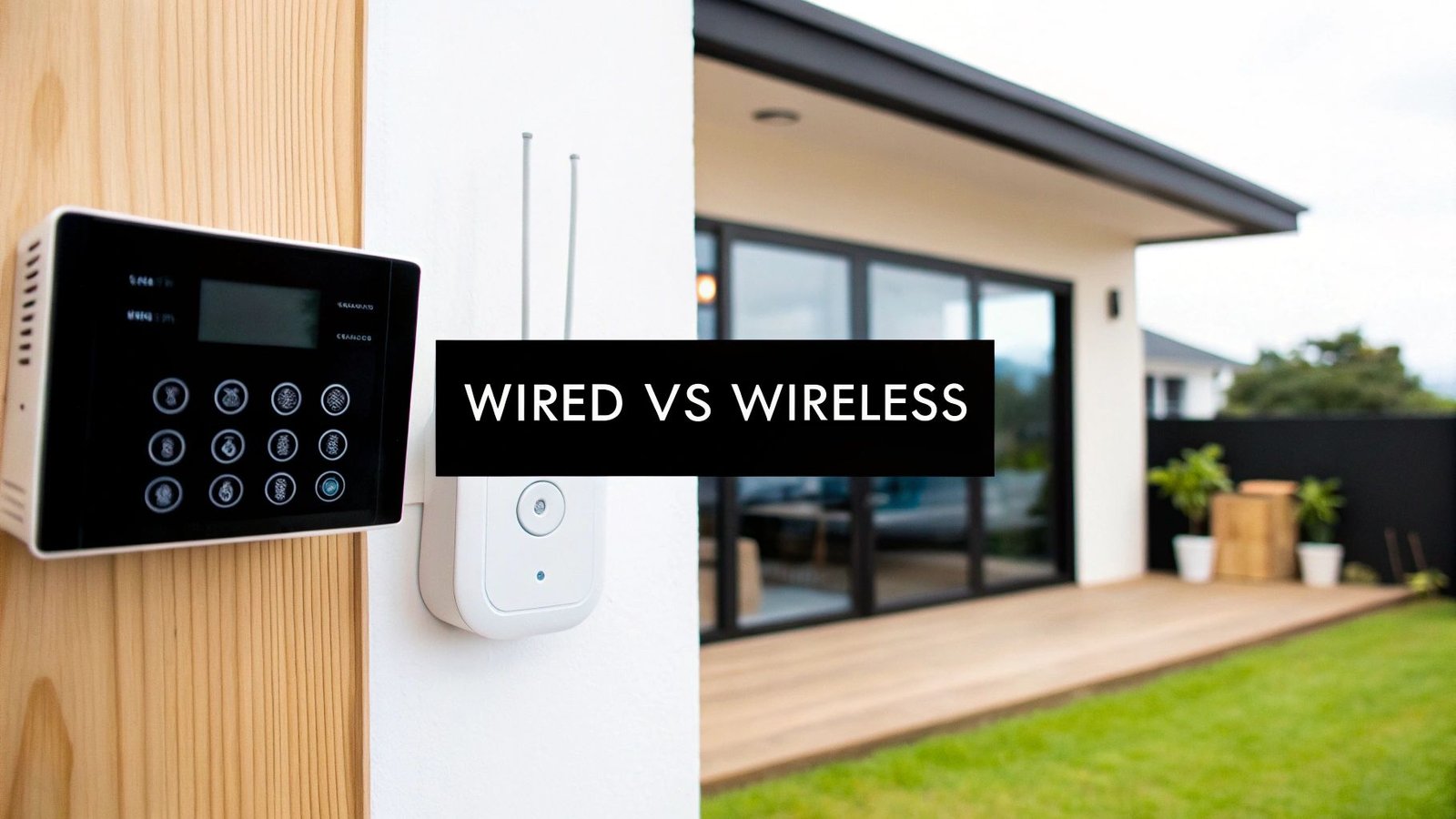
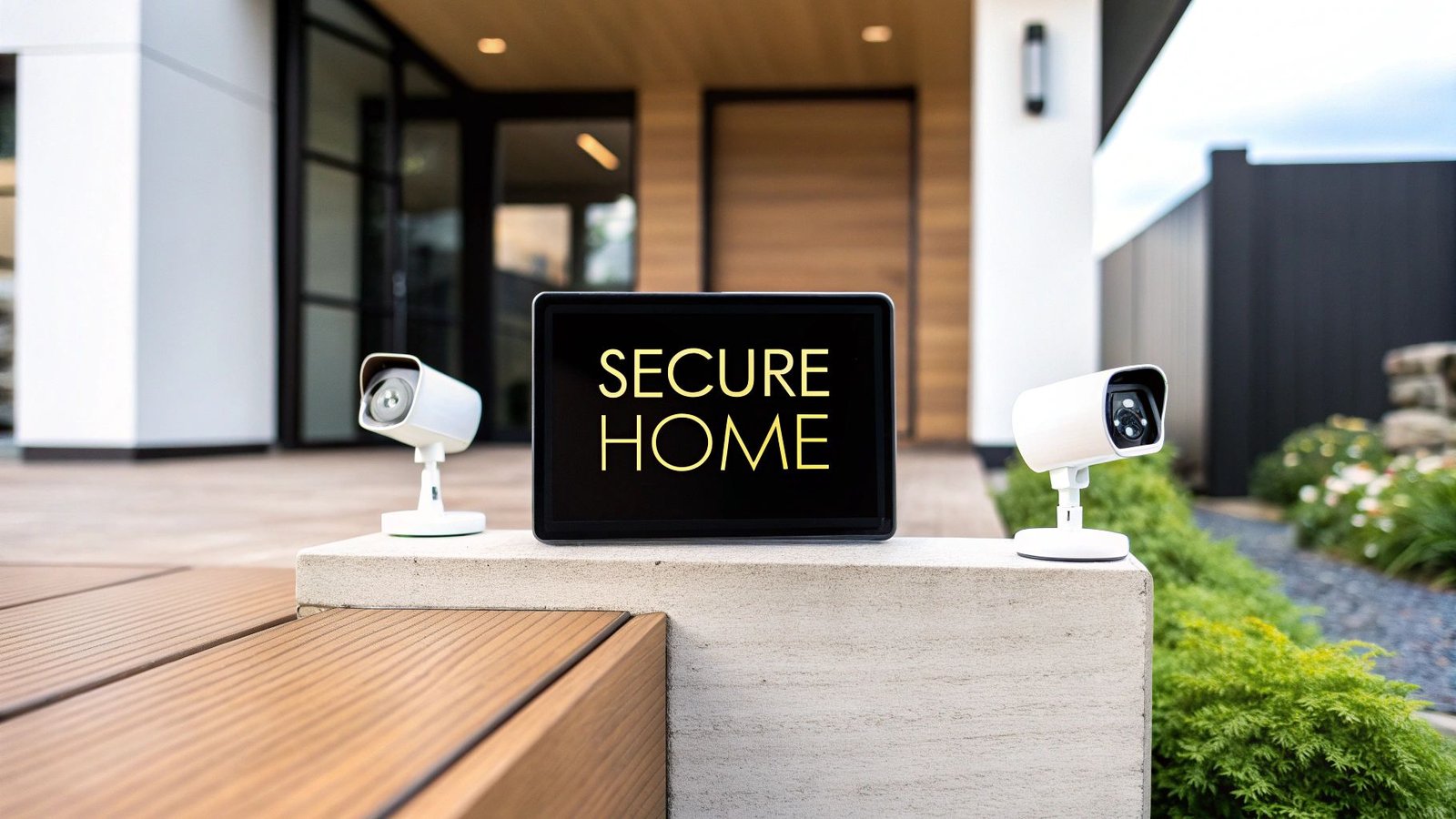
Leave a Reply